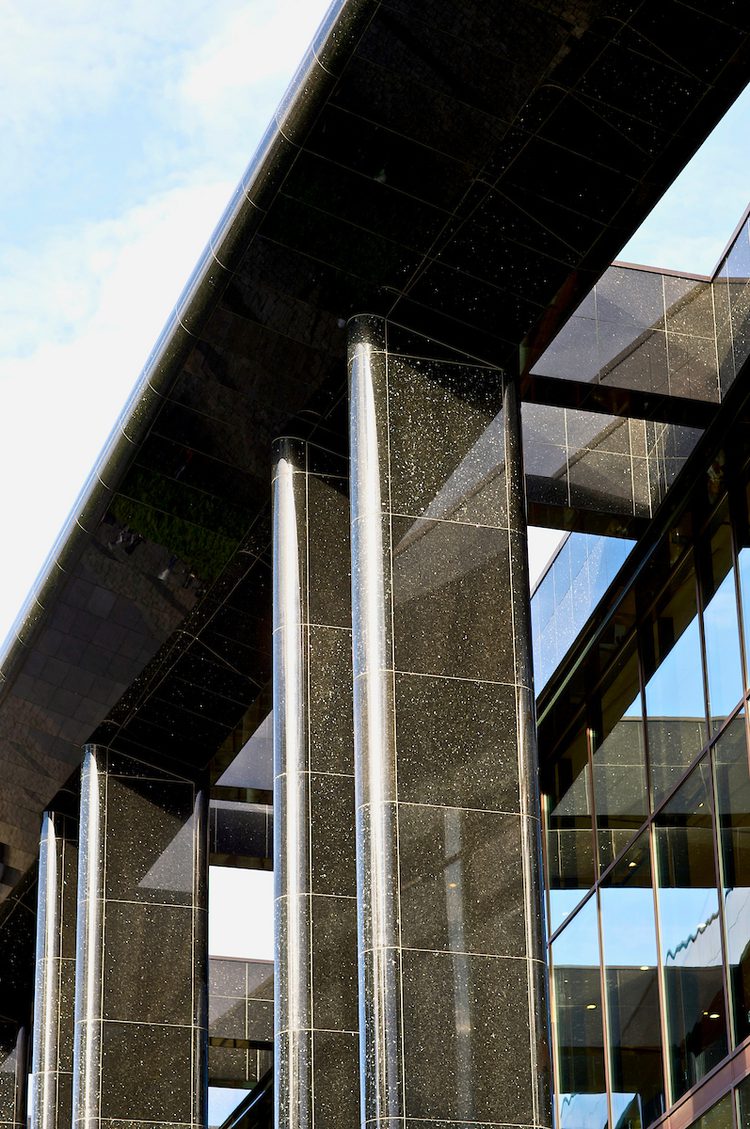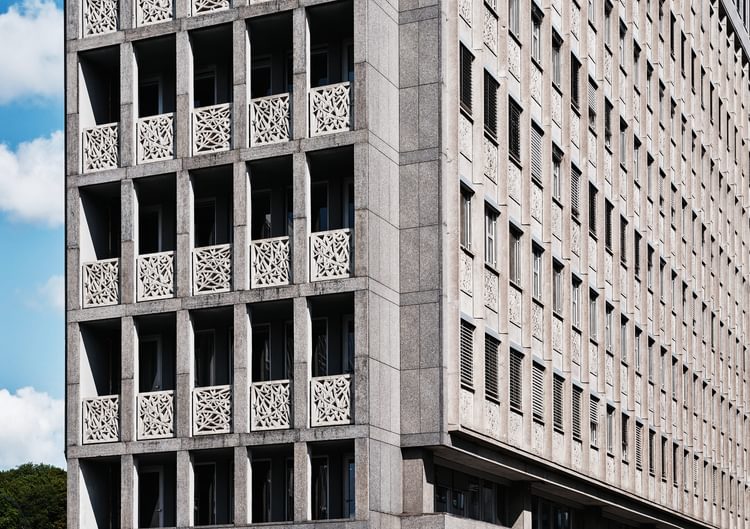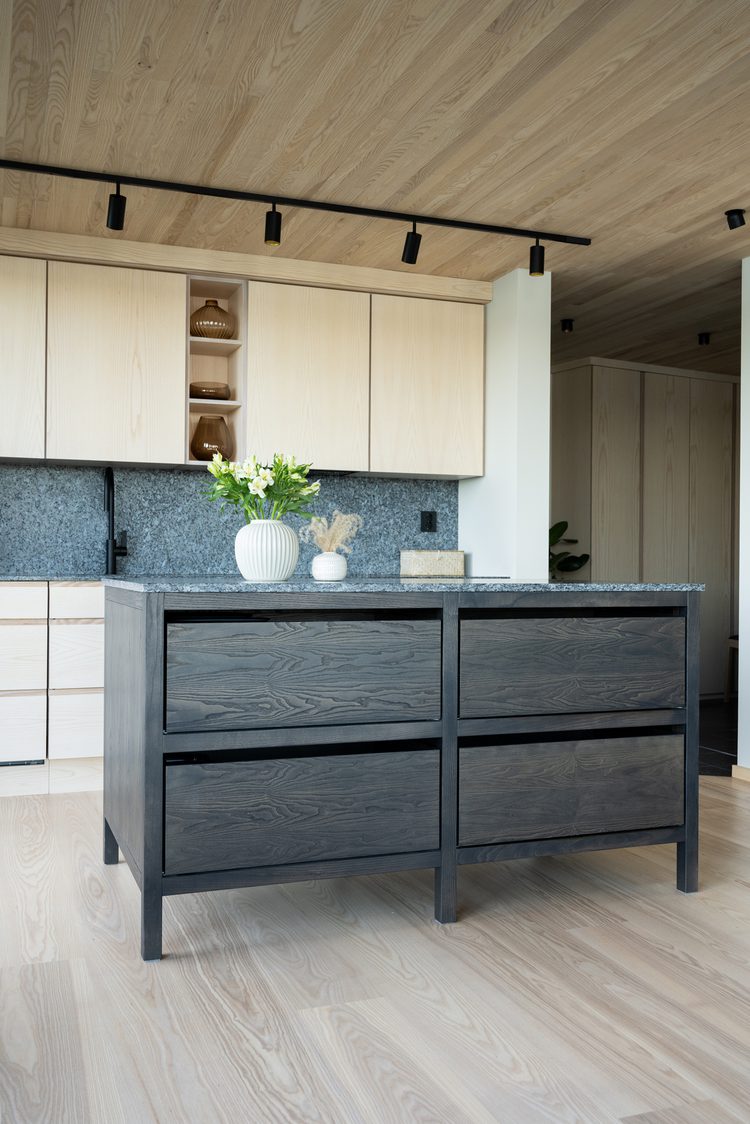Georg Sverdrups hus: A National Landmark Clad in Norwegian Larvikite
When the University Library of Oslo relocated to Blindern in 1999, the university gained a new architectural landmark. Georg Sverdrups hus marks the entrance to the campus and is designed as a monument to knowledge and community, clad in the darkest Larvikite from Lundhs Real Stone®, Lundhs Emerald®.
A New Center for the University
The architectural firm Telje-Torp-Aasen won the 1994 design competition with the proposal KABA. The main goal was to create a building that connects the upper and lower parts of Blindern and serves as a central meeting point for students and staff.
The building combines a functionalist floor plan with classical references to library and temple architecture. The curved glass façade facing the park and the row of columns along the main entrance give the building an open and inviting character, while the choice of materials conveys weight and durability.









